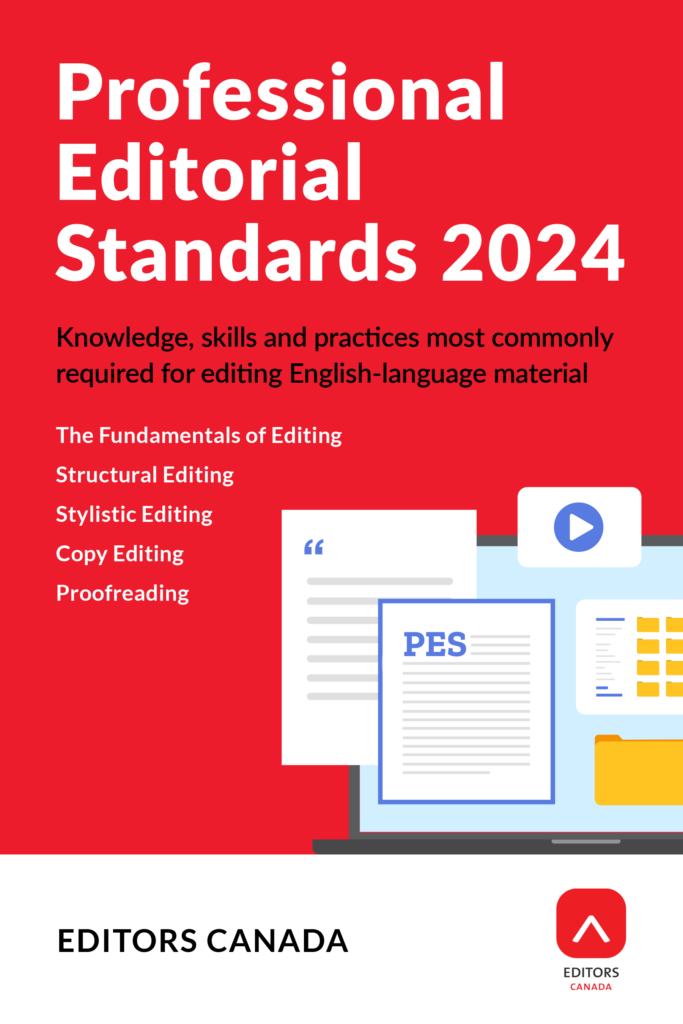Proofreaders examine material after its textual and visual elements have been laid out to correct any errors and confirm that the design effectively supports communication.
Proofreading is described here as a separate, final editorial stage; however, some projects might require combining it with other editorial stages (e.g., copy editing) because of financial or time restraints.
A professional proofreader meets the Standards in Part A: The Fundamentals of Editing and meets the following Standards.
E1 General practices
E1.1 Recognize the advantages and disadvantages of various proofreading strategies (e.g., proofreading on screen or on paper, increasing screen magnification) and apply the appropriate strategy for the material and the scope of the project. This may also extend to accessibility requirements (see Part A: The Fundamentals of Editing).
E1.2 Proofread the material in the intended medium whenever possible.
E1.3 Adhere to the editorial style sheet for the material and add to it if necessary. If no style sheet is provided and if applicable, prepare one and update it as proofreading progresses.
E1.4 In the first round of proofreading, read the material word by word and scrutinize visual elements as the task requires, comparing it with the edited copy if supplied.
E1.5 In each subsequent round of proofreading, refrain from reading the entire text (unless instructed to do so) but check that all changes have been made as requested and that they do not introduce new problems (e.g., check line and page breaks, text flow, visual elements, table of contents, navigation bar).
E1.6 Incorporate alterations from authors and other individuals, using judgment and tact, ensuring that the changes are easy to spot. Where comments conflict, use judgment or consult the project owner to mark appropriate alterations.
E1.7 At all rounds of proofreading, flag or correct egregious errors but refrain from undertaking structural, stylistic or copy editing tasks unless authorized to do so.
E1.8 At each round of proofreading, choose changes that will be the least costly or the most appropriate, given the production process, schedule, medium, purpose and type of material (e.g., contact information must be corrected but inconsistent capitalization might be left as is).
E2 Error correction
E2.1 Query, or correct if authorized to do so, inconsistencies and errors (e.g., in spelling, punctuation, facts, visual elements, navigation elements, metadata). Use judgment about the degree to which such queries and corrections are called for (e.g., different browsers format text differently, so there is no point in marking hard word breaks or table column measures in web content).
E2.2 Ensure that each proof contains all the copy and any additional elements prepared for layout (e.g., visual and audio elements, alt text, captions, acknowledgements).
E2.3 Flag or fix typographical and formatting errors, inconsistencies and irregularities in text, tables, figures, and visual elements, paying special attention to problem areas (e.g., headers and footers, folios, verso–recto orientation, covers, tables of contents, and opening and ending paragraphs).
E2.4 Check consistency and accuracy of elements in the material (e.g., cross-references, running heads, captions, web page title tags, links, metadata).
E2.5 Check end-of-line word divisions and mark bad breaks for correction in all formatted copy other than web content.
E2.6 Understand design specifications and ensure they have been followed throughout (e.g., alignment, heading styles, line length, space around major elements, rules, image resolution, colour separations, appearance of links).
E2.7 Recognize and flag matters that may affect later stages of proofreading (e.g., page cross-references; placement of visual elements; alterations that will change layout, indexing or web navigation).
E2.8 For web content, ensure that all links lead to the intended source.
Professional Editorial Standards 2024 contents

Introduction
A. The Fundamentals of Editing
B. Standards for Structural Editing
C. Standards for Stylistic Editing
D. Standards for Copy Editing
E. Standards for Proofreading
Appendix
Download Professional Editorial Standards 2024.
Looking for the previous edition? Download Professional Editorial Standards 2016.